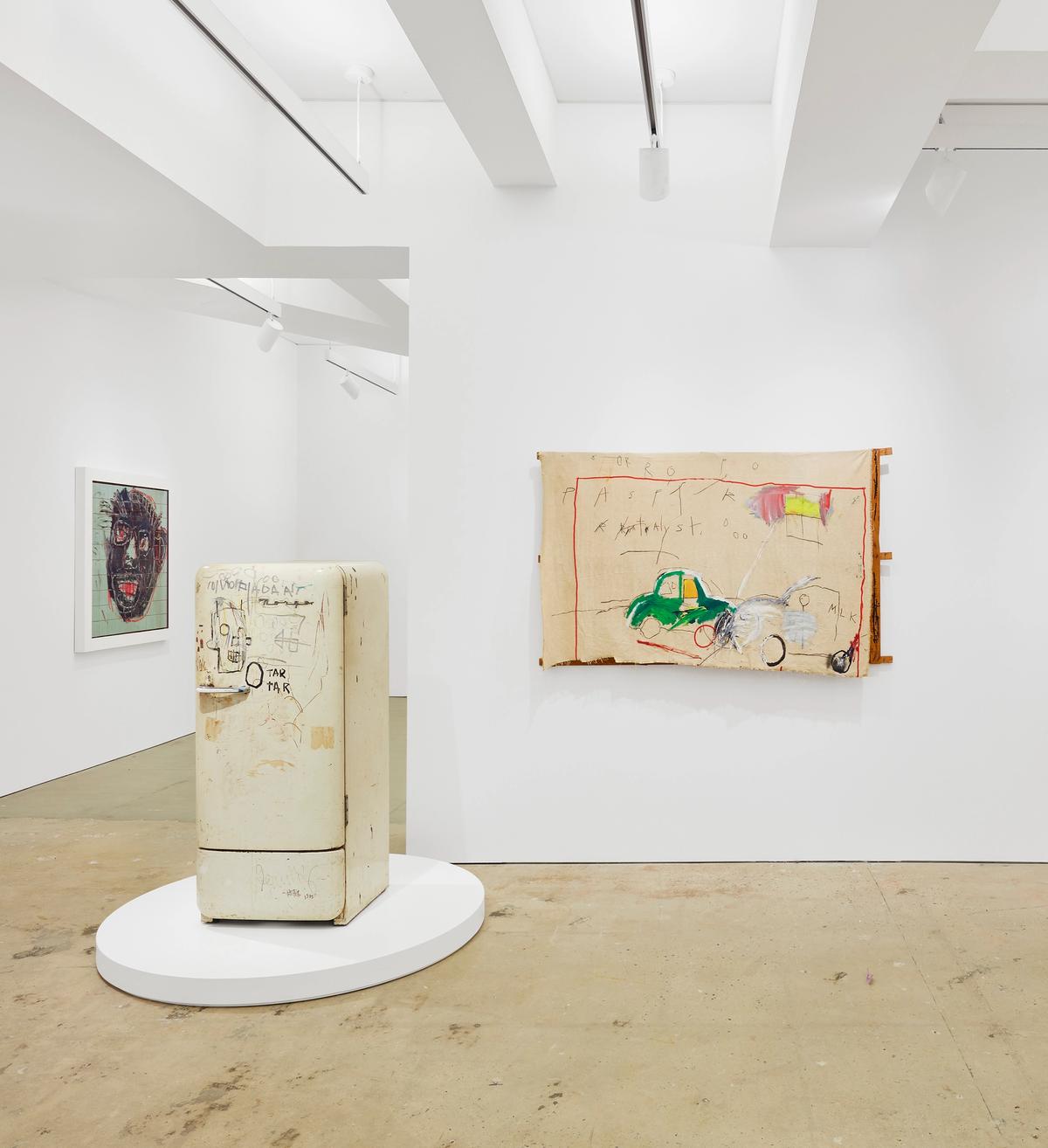A new exhibition—billed as the first to focus on the “role of found objects and unconventional materials” in the work of Jean-Michel Basquiat—features 46 works. Jean-Michel Basquiat: Art and Objecthood at Nahmad Contemporary gallery in New York (until 11 June) shows pieces made from discarded windows and doors, chairs, cabinets, wood boards and subway tiles, among other materials, including a punch bag daubed with the words Mary Boone, the former Manhattan art dealer convicted of tax fraud in 2019.
“In 2019, we had the idea to show Basquiat's sculptural 3D works. These pieces have been included in different exhibitions but there has never been an exhibition dedicated solely to the objects. Many of the works have not been seen in decades,” says Joe Nahmad, the gallery's founder, who adds that the show was three years in the planning.
The Basquiat scholar Dieter Buchhart has overseen the exhibition, the latest in a series dedicated to the late artist at Nahmad Contemporary gallery including Xerox in 2019, which explored how Basquiat—who died in 1988—used Xerox photocopies as a medium. The show is non-selling, with loans coming from the Basquiat estate, several US and European institutions, including the Fondation Louis Vuitton in Paris, and international private collections.
“From a scholarly point of view, there is so much to say [about the Basquiat objects]. He was sourcing material from his own environment—in other words the streets of New York—elevating these objects to high art. He did this in a poetic and brilliant way,” says Nahmad. In a 1985 filmed interview conducted by Becky Johnston and Tamra Davis, Basquiat said: “The first paintings I made were on windows I found on the street. And I used the window shape as a frame, and I just put the painting on the glass part and on doors I found on the street.”
Many of the works have an “exceptional provenance”, says Nahmad. Some were gifts from Basquiat to Andy Warhol such as Untitled, Refrigerator (1981), on loan from the Nicola Erni collection in Switzerland. The Mary Boone punch bag (Untitled, Mary Boone, 1984-85) is daubed with the dealer’s name and the artist’s trademark crown. “One can only wonder what Basquiat was thinking,” Nahmad says. Another work shows Boone as a clownish Mona Lisa (Boone, 1982-83). Basquiat joined the Mary Boone gallery in 1982 but after a show in 1985 was poorly received, Basquiat left the following year.
Nahmad points out the increased market value of other found-object sculptures. “In terms of an index of value, it is worth considering the piece Flexible (1984), which sold at auction [Phillips] in 2018 for $45.3m. The work is not included in the exhibition; it is made from wood slat fencing material. We are presenting more than ten wooden slat works in our show,” he says, including Untitled (1985).
He adds that Portrait of the Artist as a Young Derelict (1982), an assemblage construction made from three wooden panels, has been consigned to Christie’s New York (10 May) with an estimate in the region of $30m. The work, not included in the exhibition, has been in the same private collection for 27 years.


